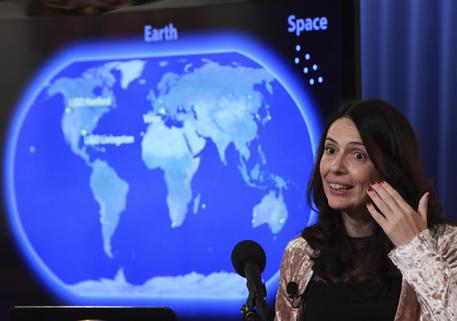(ANSA) - Rome, December 19 - Premier Paolo Gentiloni on
Tuesday telephoned astrophysicist Marica Branchesi to
congratulate her for making Nature magazine's Top Ten scientists
for 2017.
"You make Italy proud," the premier told her.
An associate professor at the Gran Sasso Science
Institute (GSSI), Branchesi works in the National Laboratories
of the Gran Sasso of the National Institute for Nuclear Physics
(INFN) and is a member of the VIRGO project.
Nature cited her for her role in the discovery of the first
signs of gravitational waves from the collision of two neutron
stars.
On October 16 fresh findings by the US LIGO and the Italian
VIRGO detectors and the Fermi satellite showed that
gravitational waves travel at the speed of light.
The data prove yet again that Einstein was right. The
phenomenon was predicted over a century ago by his theory of
relativity.
The data picked up by all the instruments also enabled a
measurement of the Hubble constant, that is the rate at which
the universe is expanding.
Education, University and Research Minister Valeria Fedeli
called the findings "another marvelous result, the fruit of a
joint effort in which Italy had a very important role".
She thanked all the Italian researchers who worked on the
"extraordinary" project "with great passion, dedication and
vision".
Fedeli dedicated the advent of the "new astronomy" to
Adalberto Giazotto, the visionary physicist who had the idea of
building VIRGO 30 years ago.
"He is the father of the results presented here today," she
aid at a press conference with the National Nuclear Physics
Institute (INFN), The National Astrophysics Institute (INAF))
and the Italian Space Agency (ASI).
For the first time, scientists directly detected
gravitational waves - ripples in space-time - in addition to
light from the spectacular collision of two neutron stars.
This marked the first time that a cosmic event had been
viewed in both gravitational waves and light.
The discovery was made using the U.S.-based Laser
Interferometer Gravitational-Wave Observatory (LIGO); the
Europe-based Virgo detector, with its detection centre at Pisa;
and some 70 ground- and space-based observatories.
The dual observation of the collision of the neutron stars
was hailed by scientists as "a Rosetta Stone for astronomy".
A factory of gold and platinum was observed.
Also cited by Nature Monday was another project in which the
INFN had a hand, the Mideast's first particle accelerator
SESAME, led by Khaled Toukan.
Gentiloni proud of astrophysicist in Nature's Top Ten (3)
Monica Branchesi led VIRGO gravitational wave discovery
